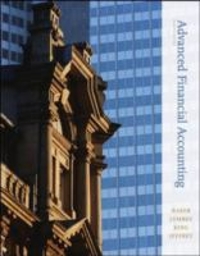Question
Carmel Corporation is considering the purchase of a machine costing $38,000 with a 4-year useful life and no salvage value. Carmel uses straight-line depreciation and
Carmel Corporation is considering the purchase of a machine costing $38,000 with a 4-year useful life and no salvage value. Carmel uses straight-line depreciation and assumes that the annual cash inflow from the machine will be received uniformly throughout each year. In calculating the accounting rate of return, what is Carmel's average investment?
Multiple Choice
- $11,875.
- $9,500.
- $19,000.
- $23,750.
- $38,000.
A company is considering the purchase of a new machine for $63,000. Management predicts that the machine can produce sales of $17,500 each year for the next 10 years. Expenses are expected to include direct materials, direct labor, and factory overhead totaling $6,500 per year including depreciation of $5,500 per year. Income tax expense is $4,400 per year based on a tax rate of 40%. What is the payback period for the new machine?
Multiple Choice
- 3.60 years.
- 6.63 years.
- 5.21 years.
- 11.45 years.
- 42.00 years.
The following relates to a proposed equipment purchase:
Cost$132,600Salvage value$3,400Estimated useful life4yearsAnnual net cash flows$45,500Depreciation methodStraight-line
The annual average investment amount used to calculate the accounting rate of return is:
Multiple Choice
- $66,300
- $64,600
- $33,150
- $68,000
- $43,550
Rosie's Company has three products, P1, P2, and P3. The maximum Rosie's can sell is 72,000 units of P1, 45,000 units of P2, and 33,000 units of P3. Rosie's has limited production capacity of 30,000 hours. It can produce 12 units of P1, 6 units of P2, and 3 units of P3 per hour. Contribution margin per unit is $5 for the P1, $15 for the P2, and $25 for the P3. What is the most profitable sales mix for Rosie's Company?
Multiple Choice
- 138,000 P1, 45,000 P2, 33,000 P3.
- 29,700 P1, 45,000 P2, 138,000 P3.
- 138,000 P1, 41,000 P2, 138,000 P3.
- 31,500 P1, 41,000 P2, 33,000 P3.
- 29,700 P1, 46,000 P2, 29,700 P3.
Epsilon Co. can produce a unit of product for the following costs:
Direct material$7.90Direct labor23.90Overhead39.50Total product costs per unit$71.30
An outside supplier offers to provide Epsilon with all the units it needs at $63.45 per unit. If Epsilon buys from the supplier, the company will still incur 30% of its overhead. Epsilon should choose to:
Multiple Choice
- Buy since the relevant cost to make it is $71.30.
- Make since the relevant cost to make it is $59.45.
- Buy since the relevant cost to make it is $43.65.
- Make since the relevant cost to make it is $43.65.
- Buy since the relevant cost to make it is $59.45.
JK Company can sell all of the plush and supreme products it can produce, but it has limited production capacity. It can produce 4 plush units per hour or 2 supreme units per hour, and it has 2,400 production hours available. Contribution margin per unit is $218 for the plush product and $304 for the supreme product. What is the most profitable sales mix for JK Company?
Multiple Choice
- 0 plush units and 4,800 supreme units.
- 4,800 plush units and 4,800 supreme units.
- 9,600 plush units and 0 supreme units.
- 9,600 plush units and 4,800 supreme units.
- 4,800 plush units and 2,400 supreme units.
Step by Step Solution
There are 3 Steps involved in it
Step: 1

Get Instant Access to Expert-Tailored Solutions
See step-by-step solutions with expert insights and AI powered tools for academic success
Step: 2

Step: 3

Ace Your Homework with AI
Get the answers you need in no time with our AI-driven, step-by-step assistance
Get Started


